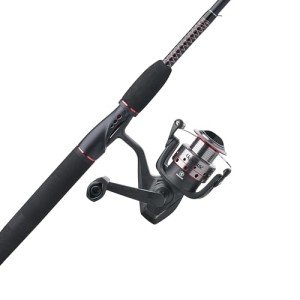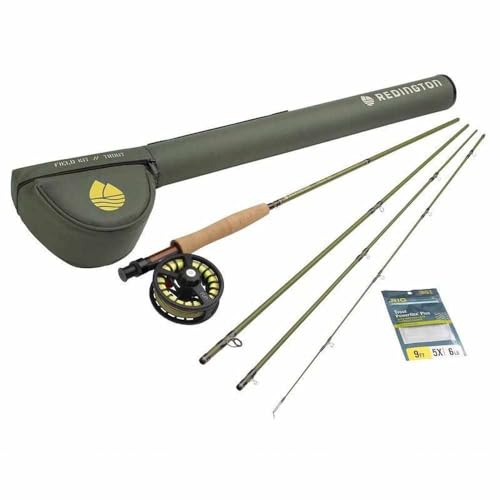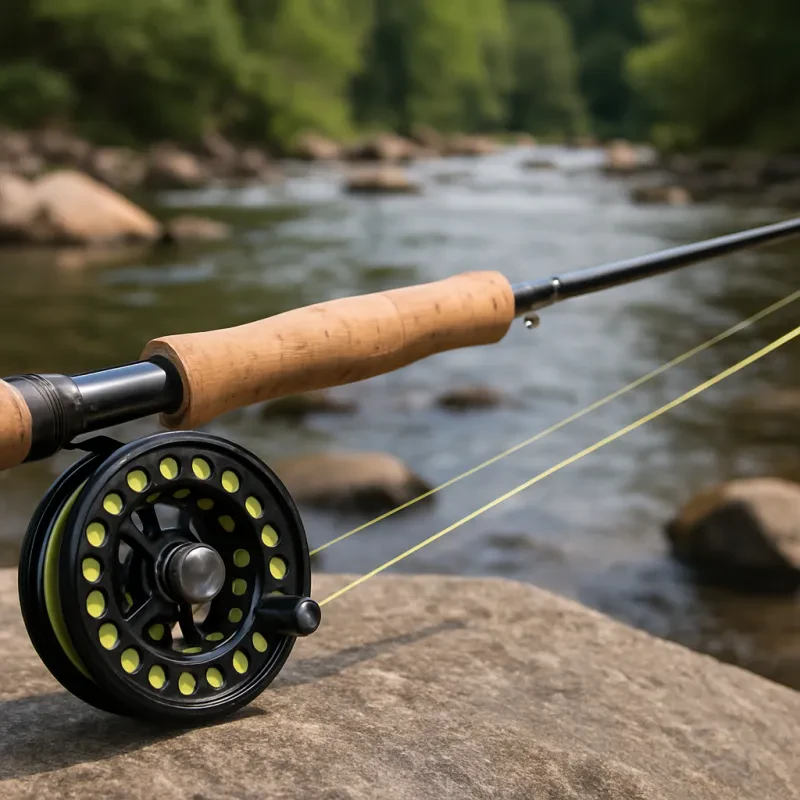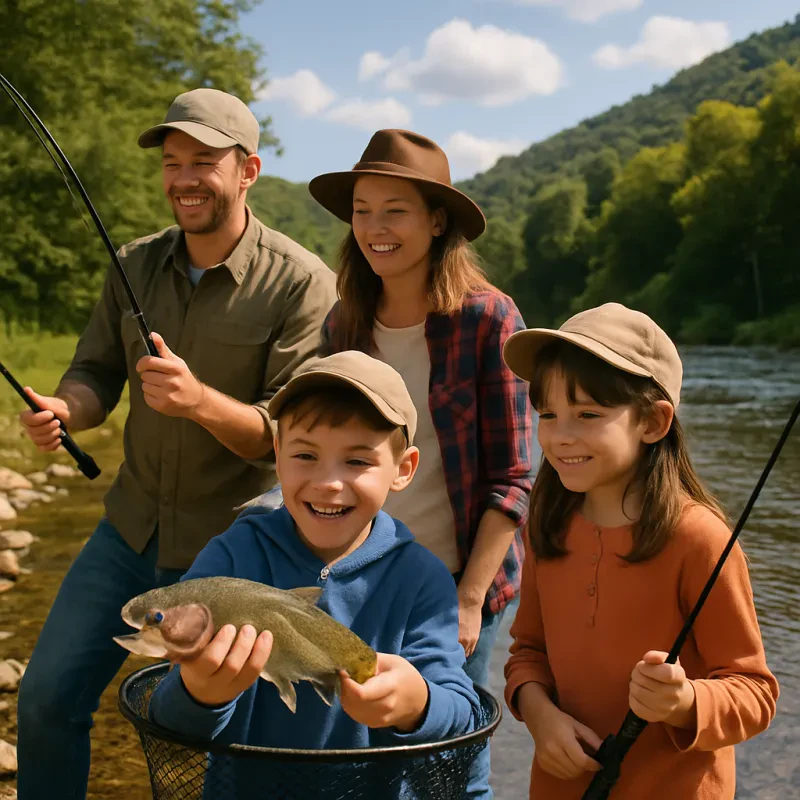Stillwater fly fishing, often overshadowed by the romanticism of fast-moving mountain streams, offers a unique and rewarding challenge for trout anglers. Lakes, ponds, and reservoirs—collectively known as stillwaters—present different conditions and demand a refined approach. Whether you're a seasoned fly fisherman looking to expand your skills or a beginner eager to explore new waters, stillwater fly fishing holds countless opportunities. In this guide, we’ll cover everything you need to know, from gear selection to fly patterns and tactics, all optimized to help you succeed on stillwater.
What is Stillwater Fly Fishing?
Stillwater fly fishing involves casting flies in bodies of non-moving or slow-moving water, like lakes, reservoirs, and ponds. Unlike river or stream fishing, where current plays a significant role, stillwater fly fishing relies heavily on understanding water temperature, wind, insect hatches, and trout behavior.
Stillwaters often harbor larger trout than streams due to the abundance of food and space. However, finding these fish and convincing them to bite is a nuanced game.
Essential Gear for Stillwater Fly Fishing
Rods and Reels
For stillwater fly fishing, a 9 to 10-foot rod in a 5 to 7-weight is ideal. The extra length allows for better line control and longer casts, especially when fishing from a float tube or boat.
Reels should have a smooth drag system. Large trout in stillwaters can make long, powerful runs.
Fly Lines
Fly line selection is critical. You'll need a variety:
-
Floating Line: Ideal for fishing dry flies or subsurface patterns near the top.
-
Intermediate Line: Slowly sinks and is excellent for fishing nymphs and streamers.
-
Sinking Lines (Di3, Di5, Di7): Useful for reaching deeper fish, especially in summer or during midday lulls.
Leaders and Tippet
Leaders in the 9 to 15-foot range are common, depending on the water clarity and depth. Fluorocarbon tippet is preferred due to its sinking qualities and low visibility.
Other Essentials
-
Polarized sunglasses for spotting fish and reducing glare
-
Float tube, pontoon boat, or kayak for mobility
-
Anchor or drift sock to control positioning in windy conditions
-
Thermometer to monitor water temperature
Locating Trout in Stillwaters
Understanding Lake Structure
Unlike rivers, where trout often hold behind rocks or in riffles, stillwater trout move constantly. Key areas to target include:
-
Drop-offs: Sudden changes in depth attract cruising trout
-
Weed beds: Provide cover and insect life
-
Inlets and Outlets: Offer oxygen and food
-
Sheltered Bays: Especially productive during windy conditions
Seasonal Movements
Trout behavior changes with the seasons:
-
Spring: Fish move into shallows as the water warms and insect hatches begin
-
Summer: Trout often retreat to deeper, cooler water
-
Fall: Pre-winter feeding frenzy; fish cruise the shallows again
-
Winter: Activity slows, but fishing can still be productive in milder climates
Effective Fly Patterns for Stillwater
Stillwater trout often feed on a diverse range of food sources. Matching the hatch is critical, but general attractor patterns can also be effective.
Chironomids (Midges)
Arguably the most important stillwater insect. Use in sizes 12-20. Fish them under an indicator or on a slow retrieve.
Top Patterns:
-
Zebra Midge
-
Ice Cream Cone
-
Chromie
Damsel and Dragonfly Nymphs
These are active swimmers and are a favorite of stillwater trout, especially in summer.
Top Patterns:
-
Damsel Nymph
-
Dragonfly Nymph
Leeches and Buggers
These larger patterns attract aggressive strikes and are effective year-round.
Top Patterns:
-
Woolly Bugger
-
Balanced Leech
Scuds and Shrimp
Found in weedy lakes, these crustaceans are a staple.
Top Patterns:
-
Orange Scud
-
Olive Shrimp
Terrestrials and Dry Flies
Effective during windy days when ants, beetles, or hoppers get blown into the water.
Top Patterns:
-
Foam Beetle
-
Parachute Adams
Presentation and Retrieval Techniques
Unlike river fishing, where the current moves your fly, stillwater fly fishing relies on retrieve techniques.
Static Presentation
Using a strike indicator and letting the fly sit motionless is deadly for chironomids or balanced leeches. This method imitates suspended or drifting insects.
Slow Retrieve
Mimic natural movement with a hand-twist retrieve. This is ideal for damsel nymphs and scuds.
Fast Strips
Trigger reaction strikes with short, aggressive strips using streamers and leeches.
Wind Drifting
Let the wind drift your fly naturally. Use a floating line with a long leader and let your fly slowly drag across the surface.
Tips for Success in Stillwater Fly Fishing
Match the Hatch
Take time to observe insect activity. Use a small aquarium net or examine stomach contents (where legal) to identify what trout are feeding on.
Use a Depth Finder
A portable sonar unit can reveal drop-offs and feeding zones.
Fish Early and Late
Low light conditions are often the most productive. Fish are more active and less wary.
Be Mobile
If you're not catching fish, change locations, depth, or fly patterns. Stillwater trout are constantly on the move.
Observe Wind Patterns
Wind pushes food to the downwind side of the lake. Fish often follow.
Best Times and Locations for Stillwater Trout Fishing
When to Go
Spring and fall offer the most consistent action, as water temperatures are ideal and trout cruise the shallows.
Top Locations
-
Western U.S.: Henry's Lake (Idaho), Pyramid Lake (Nevada), Crane Prairie (Oregon)
-
Eastern U.S.: White Mountains (New Hampshire), Lake Erie Tribs (Pennsylvania)
-
UK: Rutland Water, Grafham Water
-
Canada: Kamloops region in British Columbia
Conclusion
Stillwater fly fishing opens up a world of possibilities for trout anglers willing to learn its nuances. From choosing the right fly lines and patterns to mastering presentation techniques and reading lake structure, the skills involved are as rewarding as the fish themselves. While it might lack the sound of rushing water, the thrill of a big trout slamming a fly in still, glassy water is unmatched. With patience, observation, and practice, stillwater fly fishing can become one of the most fulfilling aspects of your fly fishing journey.
Whether you're float-tubing into a remote alpine lake or walking the banks of a local reservoir, remember: the trout are there. Now you know how to catch them.







